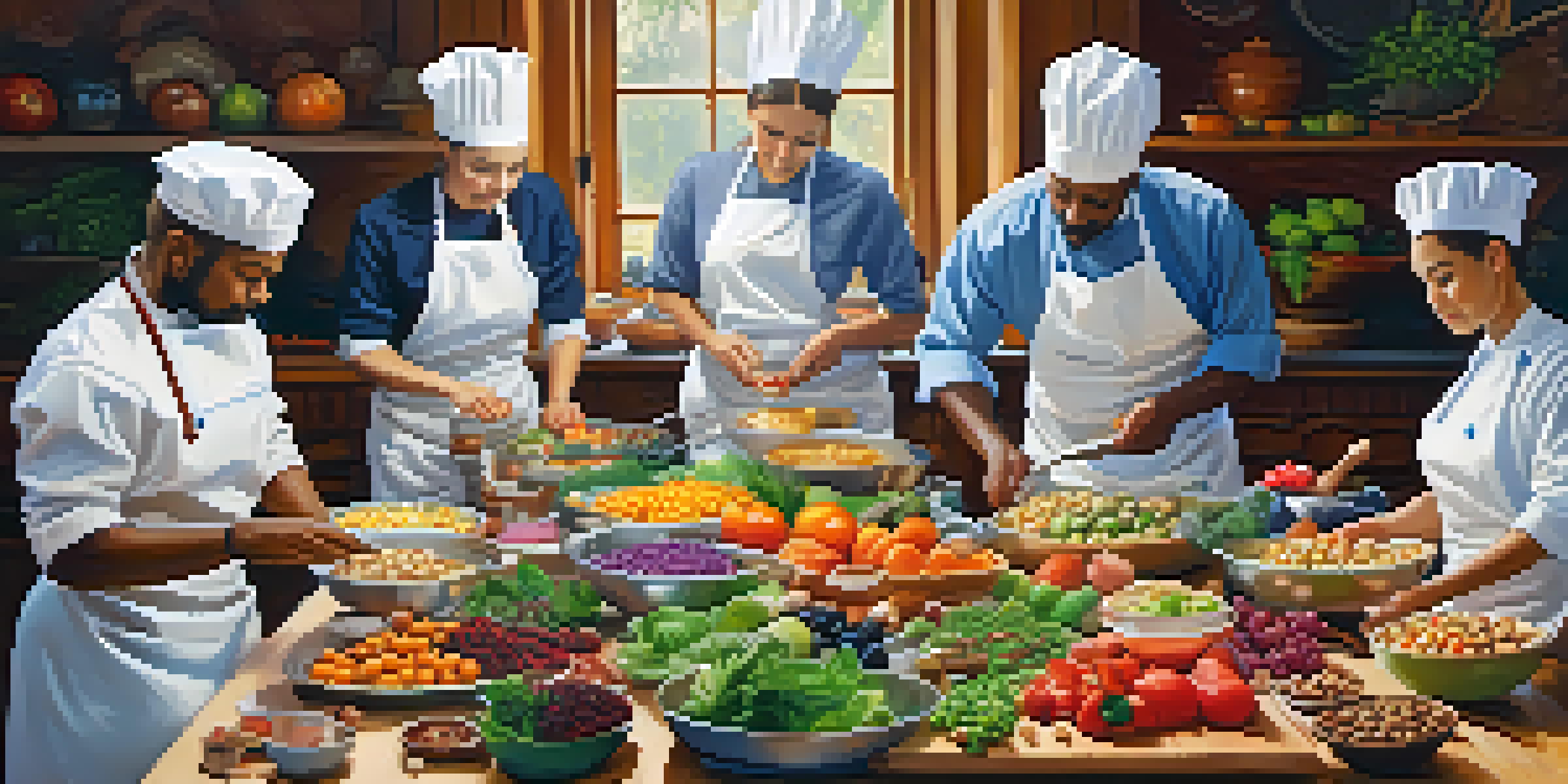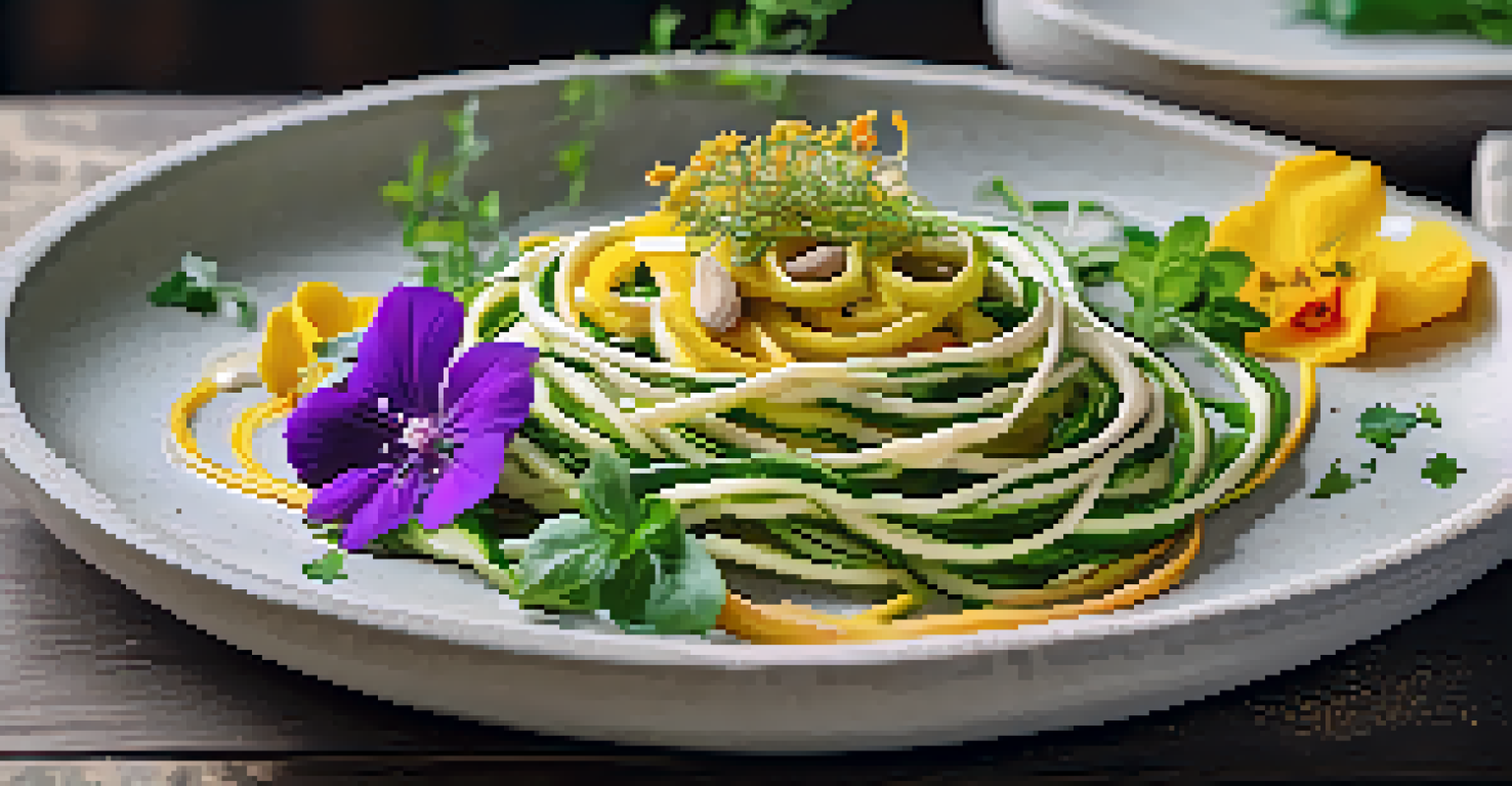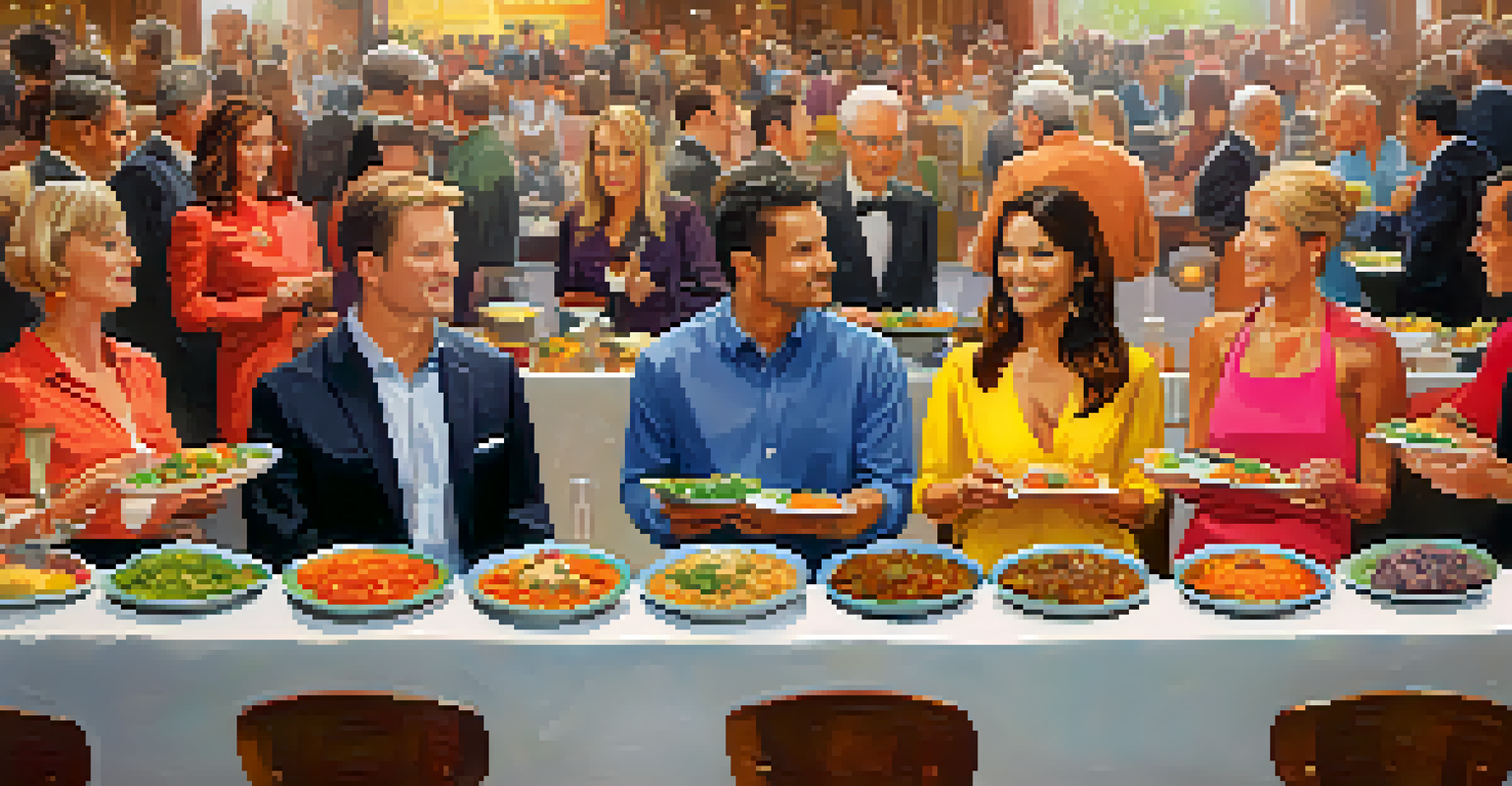Behind the Scenes of Popular Raw Food Culinary Competitions

The Rise of Raw Food Culinary Competitions
In recent years, raw food culinary competitions have gained immense popularity. Chefs and home cooks alike are exploring the benefits of uncooked ingredients, emphasizing freshness and nutrition. These events not only highlight culinary skills but also foster a deeper appreciation for plant-based diets.
Let food be thy medicine and medicine be thy food.
Competitions like the Raw Food World Championship attract talent from around the globe, showcasing innovative recipes that push the boundaries of traditional cooking. Participants often create visually stunning dishes that are as pleasing to the eye as they are to the palate. This trend reflects a growing movement towards healthier eating and sustainable food practices.
As more people seek out plant-based options, these competitions serve as a stage for creativity and education. They provide a unique opportunity for participants to share their passion for raw foods, inspiring others to experiment in their own kitchens.
Preparation: The Art of Raw Food Crafting
Preparing for a raw food competition requires meticulous planning and creativity. Chefs spend weeks, sometimes months, experimenting with flavors and textures to perfect their dishes. It’s not just about taste; presentation plays a crucial role in capturing the judges' attention.

From selecting the freshest ingredients to crafting visually appealing arrangements, every detail is considered. Many competitors utilize techniques like spiralizing vegetables or creating intricate garnishes to elevate their dishes. This artistry is what makes raw food competitions so captivating.
Popularity of Raw Food Competitions
Raw food culinary competitions are thriving, highlighting the creativity and passion for plant-based diets among chefs and home cooks.
Moreover, the preparation process often involves trial and error. Competitors learn from their mistakes, adjusting recipes to achieve the perfect balance of flavors. This journey of experimentation adds depth to their culinary skills, making the final presentation even more rewarding.
Judging Criteria: What Judges Look For
Judging a raw food culinary competition is no small feat. Judges typically consider several criteria, including taste, presentation, creativity, and originality. Each dish must not only be delicious but also visually appealing and innovative.
You are what you eat, so don't be fast, cheap, easy, or fake.
Taste is paramount; judges evaluate the balance of flavors and textures, which can be particularly challenging in raw cuisine. A dish that combines sweet, salty, and savory elements can leave a lasting impression. Additionally, the use of unique ingredients can set a dish apart, showcasing a chef's creativity.
Presentation is equally important, as a beautifully arranged plate can elevate the dining experience. Judges appreciate intricate designs and vibrant colors that reflect the natural beauty of raw ingredients. The overall experience, from the first look to the final bite, is critical in determining the winner.
The Role of Innovation in Raw Food Competitions
Innovation is the heartbeat of raw food culinary competitions. Chefs are constantly pushing the envelope, experimenting with new techniques and flavor combinations. This drive for creativity leads to exciting dishes that surprise and delight both judges and audiences.
Many competitors draw inspiration from global cuisines, incorporating unique spices and ingredients to create fusion dishes. For instance, a classic Italian pasta dish might be reimagined using zucchini noodles and a creamy cashew sauce, showcasing the versatility of raw ingredients.
Innovation Drives Culinary Creativity
Participants continually experiment with new techniques and global flavors, pushing the boundaries of traditional raw cuisine.
This culture of innovation not only benefits the competitors but also enriches the raw food community as a whole. By sharing their discoveries, chefs inspire others to think outside the box and explore new culinary horizons, thereby expanding the appeal of raw foods.
Challenges Faced by Competitors
Despite the excitement, raw food competitions come with their own set of challenges. One of the biggest hurdles is time management; competitors must prepare their dishes within a limited timeframe. This can lead to high-pressure situations that test not only cooking skills but also composure.
Additionally, working with raw ingredients can be unpredictable. For example, the ripeness of fruits or vegetables can affect flavor and texture, creating complications during preparation. Competitors must be adaptable, ready to pivot their plans based on the ingredients they have.
Moreover, the competition environment can be intense, with many talented chefs vying for the top spot. This pressure can lead to stress and self-doubt, making mental resilience as important as culinary skill. Overcoming these obstacles often becomes part of the contestants' journey.
Community and Networking in Raw Food Events
One of the most rewarding aspects of raw food culinary competitions is the sense of community they foster. Chefs and food enthusiasts come together to share their passion for raw cuisine, creating lasting connections. This collaborative spirit enhances the overall experience for participants and spectators alike.
Networking opportunities abound, with many competitors forming friendships that extend beyond the competition. These relationships often lead to collaborations, such as joint cooking classes or recipe development. The camaraderie among participants highlights the welcoming nature of the raw food community.
Community and Networking Opportunities
These events foster a strong sense of community, allowing chefs to connect, collaborate, and share knowledge about raw food.
Moreover, these events serve as platforms for education, where seasoned chefs share their knowledge with newcomers. Workshops and demonstrations often accompany competitions, providing valuable insights into raw food techniques and nutrition. This commitment to sharing knowledge helps elevate the entire raw food movement.
The Future of Raw Food Culinary Competitions
As the demand for plant-based and raw food options continues to grow, so too does the potential for culinary competitions. We can expect to see more events pop up around the world, each showcasing unique regional flavors and techniques. This expansion will further diversify the raw food landscape.
Innovative technologies, such as online platforms for virtual competitions, may also reshape the way these events are conducted. This accessibility allows participants from various backgrounds to showcase their talents, regardless of geographic limitations. It opens up new avenues for creativity and connection in the raw food community.

Ultimately, the future of raw food culinary competitions looks bright. With an ever-growing audience eager for fresh, healthy options, these events will continue to inspire and challenge chefs to create extraordinary dishes that celebrate the beauty of raw ingredients.